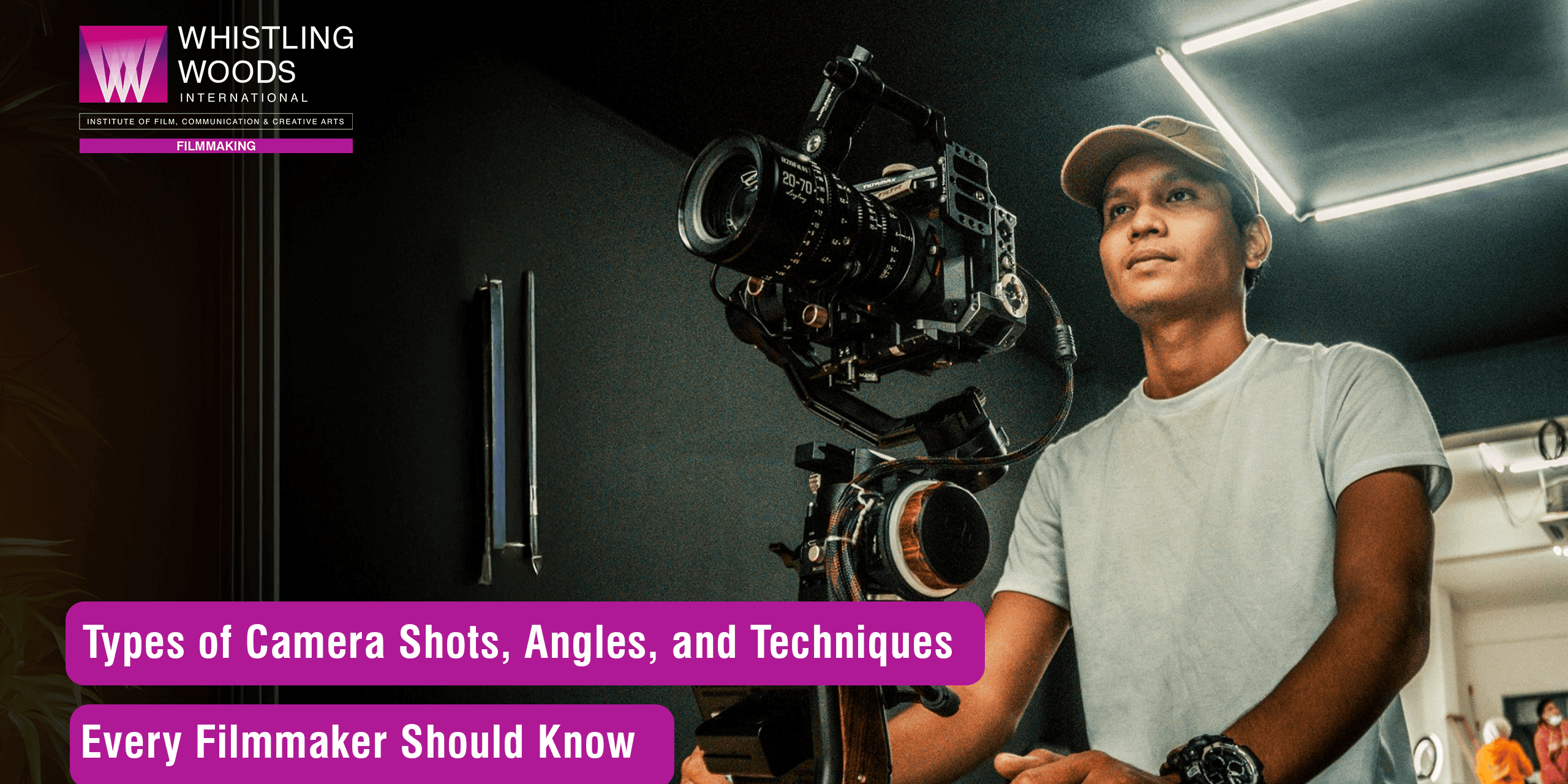Camera angles play a significant role in filmmaking, and a variety of angles help enhance the storytelling theme, narrative, and mood of a film. Cinematographers consciously utilize several types of camera shots while shooting a scene to portray a specific mood in the movie. Camera angles are critical because they help convey the overall message of the film, which the filmmaker crafts by combining individual frames.
If you are an aspiring cinematographer, it is essential to learn about different types of cinematography techniques to push a narrative forward using various camera shots. After all, filmmaking is about portraying the story as intended by employing diverse cinematic shots. Let’s delve into the types of camera angles, shots, and techniques:
Types of Camera Shots Useful in Building a Narrative
When discussing types of camera angles and shots, some basic options are primarily used to define the subject’s size within the frame. When enrolling in a filmmaking course in India, many reputed institutes provide insights into both basic and advanced shots, including:
Close-up Shot
A close-up is a tightly framed shot of an object or person captured at close range, designed to highlight intricate details. This frame typically focuses on a character’s face to convey emotions clearly and portray their emotional state of mind during a scene.
Medium Shot
Also referred to as a waist shot, this is a shot that is captured at a medium distance from the subject, enabling the audience to observe both details of the subject and the surroundings in which the scene occurs.
Low-Angle Shot
This shot frames the subject from below their eye line, making them appear superior. It elicits feelings such as dread or fear within the scene and is often used to represent power dynamics between characters. Typically, it is paired with a high-angle shot of the opposing character.
Eye-Level Shot
An eye-level shot is one of the most commonly used camera techniques. The angle is set at the subject’s eye level, which is known for offering a neutral perspective. It is often used to portray characters as relatable, breaking down barriers to connect the audience with the characters.
High-Angle Shot
A high-angle shot is commonly seen in action or superhero movies, where the camera looks down on the subject, portraying them as vulnerable or powerless. This angle is associated with inferiority but can vary creatively, depending on the cinematographer’s intent.
Knee-Level Shot
In this shot, the camera is positioned at the subject’s knee height, which can emphasise the superiority of the character when paired with a low-angle shot. It is frequently used to focus on the character’s movement, particularly walking. It differs from the ground-level shot, which serves a similar purpose but is set lower.
Ground-Level Shot
A ground-level shot typically frames characters walking without showing their faces. It engages viewers by requiring them to infer meaning from context and actor performance. The camera is placed directly on the ground in this type of shot.
Hip-Level Shot
Also known as the cowboy shot, the hip-level shot is used when a subject is seated and another character is standing. The camera is placed roughly waist-high to capture movement or action occurring around the hip area, such as drawing a weapon, making it common in action films.
Aerial Shot
Aerial shots, widely used in action films, are captured using drones or helicopters to showcase expansive scenery or landscapes. They are particularly effective for establishing a sense of scale.
Other Camera Angles
Other prominent camera shots in filmmaking include extreme close-ups, up shots, down shots, over-the-shoulder shots, two shots, point-of-view shots, full shots, bird’s-eye shots, and Dutch angles. Understanding these technical aspects is vital for becoming a skilled storyteller.
To master the art of translating vision into compelling visuals, aspiring filmmakers should consider enrolling in courses offered by a filmmaking college in India. These institutions provide a comprehensive understanding of camera angles, shots, and techniques.
Learn to Craft a Masterpiece with Each Shot at Whistling Woods International
Master the art of telling compelling stories through stunning visuals with the guidance of experts at Whistling Woods International, an esteemed filmmaking college in India.
At WWI, we offer a wide range of courses designed to help students craft impactful scenes, apply storytelling techniques to visuals, capture beautifully framed landscapes, and replicate cinematic movements effectively.
Our well-structured courses include a B.Sc. in Filmmaking, an M.A. in Filmmaking with specializations, and more. These programs, aggregated by the distinguished Tata Institute of Social Sciences (TISS), are tailored to turn students into skilled cinematographers and videographers, equipping them to achieve their dreams.
Learn fundamental and advanced skills from industry experts and pave your way to becoming a trailblazer in the filmmaking industry with WWI! Enroll in our courses today and transform your filmmaking aspirations into reality.

